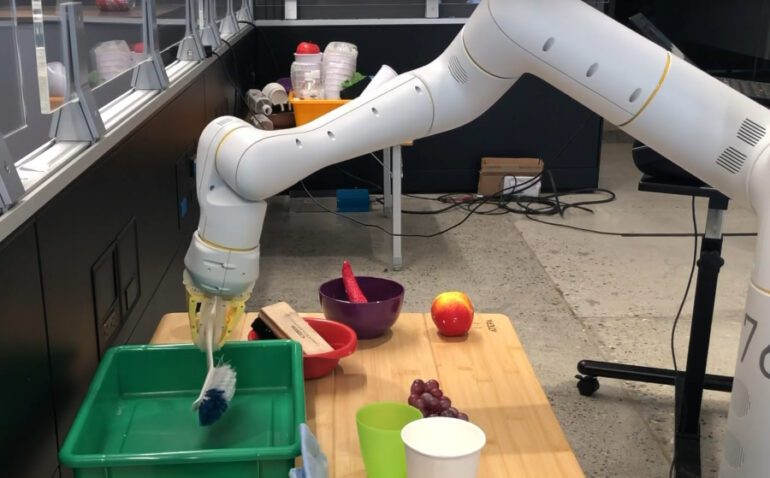TL;DR:
- CMU Robotics Institute presents VRB (Vision-Robotics Bridge), an evolution of WHIRL algorithm.
- VRB enables robots to learn tasks by watching videos of humans, eliminating the need for identical execution environments.
- Robots extract key information from videos such as contact points and trajectory to understand task mechanics.
- CMU utilizes extensive video datasets, including Epic Kitchens and Ego4D, to train robots.
- This breakthrough opens doors for robots to learn from internet and YouTube videos.
- The implications are significant for the future of robotic learning and autonomy.
Main AI News:
Advancements in robotic learning have long been pursued, with the aspiration of enabling robots to adapt and thrive in unpredictable environments. The ability to go beyond traditional programming and embrace autonomous learning has become a crucial objective. As I delve deeper into this realm and engage in conversations with experts, it becomes increasingly evident that a multi-faceted approach is required to achieve true robotic learning.
Among the array of intriguing solutions, video-based learning has emerged as a captivating centerpiece of recent research endeavors. A year ago, we unveiled WHIRL (in-the-Wild Human Imitating Robot Learning), an algorithm developed by the esteemed team at CMU (Carnegie Mellon University). WHIRL revolutionized the training process by leveraging video recordings of humans executing various tasks.
Now, CMU Robotics Institute’s assistant professor, Deepak Pathak, presents an evolution of this groundbreaking concept—VRB (Vision-Robotics Bridge). Building upon its predecessor, VRB still relies on human-centric videos to demonstrate tasks, but it has surpassed the limitations of executing these tasks in identical settings to those of the robots’ operational environment.
According to a statement from PhD student Shikhar Bahl, VRB enables robots to venture beyond their confines and actively explore the world surrounding them. By imbibing this model, robots can transcend mere arm movements and interact with their surroundings more directly, enhancing their overall capabilities.
To equip robots with the necessary knowledge, several key pieces of information are extracted from the videos, including contact points and trajectory. A practical example illustrated by the CMU team involves opening drawers. The contact point represents the handle, while the trajectory signifies the direction of the opening motion. By observing numerous videos of humans opening drawers, the robot can decipher the mechanics of opening any drawer.
However, not all drawers are created equal. While humans have mastered the art of drawer-opening, the occasional peculiarly designed cabinet can still pose a challenge. To tackle this, one crucial aspect lies in expanding the training datasets. CMU has turned to comprehensive video databases like Epic Kitchens and Ego4D, the latter boasting an impressive “nearly 4,000 hours of egocentric videos of daily activities from across the world.”
Shedding light on the vast potential of training data, Bahl emphasizes the untapped wealth awaiting exploration. By leveraging these datasets in innovative ways, this research breakthrough could empower robots to glean insights from the vast expanse of internet and YouTube videos. The implications are vast, revolutionizing the learning process for robots and unlocking their true potential.
Conclusion:
The emergence of video-based learning, as exemplified by CMU’s VRB, marks a pivotal moment in the field of robotics. By allowing robots to learn from videos of humans, irrespective of the execution environment, this technology enhances their adaptability and expands their capabilities. The ability to extract crucial information from videos, combined with access to vast video datasets, ushers in a new era of learning for robots.
`This has profound implications for the market, as it empowers robots to overcome challenges posed by unpredictable environments and paves the way for their integration into various industries and applications. With the potential to learn from the abundance of internet and YouTube videos, robots are poised to become more intelligent, versatile, and efficient, revolutionizing the market and unlocking a multitude of opportunities for automation and innovation.

